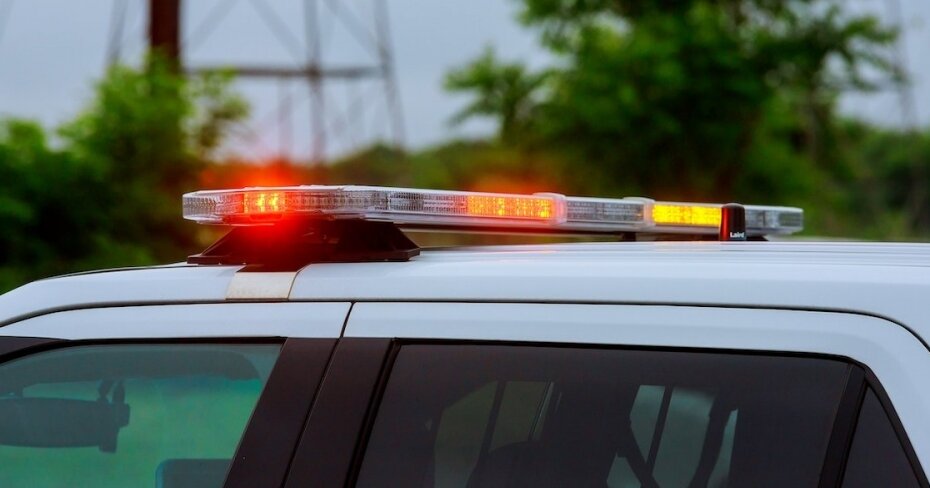How do the police actually detect distracted driving?
By: Lisa Coxon on December 14, 2023
This article has been updated from a previous version.
Every year, 1.6 million car crashes result from mobile phone use while driving.
And despite being illegal, distracted driving is one traffic offence that’s still shrouded in a bit of mystery.
Police use radar guns to determine if — and by how much — someone's speeding. We know red light cameras catch those drivers who dangerously decide to blow through them. And breathalyzers are handy tools that law enforcement can use to confirm if someone is driving under the influence of alcohol.
But what about distracted driving?
This is a charge much less dependent on physical tools and much more dependent on physical observation. How do police actually detect a distracted driver? And if a driver wants to dispute the charge, how can the police prove what they say they saw?
In this article:
What are examples of distracted driving?
Examples of distracted driving can include driving while:
- talking and using a mobile device
- texting
- reading (e.g. books, maps)
- watching videos
- eating or drinking
- smoking or vaping
- grooming
- adjusting the radio
- listening to extremely loud music
- talking to passengers
Read more: Touch screens in cars are distracting, so why do we keep on putting them?
Cues that you’re distracted
When police are on duty, they’re looking for three distracted-related offences under Ontario’s Highway Traffic Act:
- Display screen visible to the driver (e.g., YouTube playing a video; GPS is allowed as long as you’re not interacting with it while driving)
- Handheld use of communication devices (e.g., holding your cell phone up to your ear)
- Handheld use of entertainment devices (e.g., using a portable DVD player)
“The one where we’re getting pretty much all the numbers on is the handheld communication device offence,” says Sgt. Jason Kraft of the Toronto Police Service (TPS). “That's the person that has their phone in their hand while they're in care and control of their vehicle.”
Related: What is dangerous driving, and how does it impact your insurance rate?
"Often a distracted driver looks just like a fatigued driver or even an impaired driver"
During a traffic campaign called #MarchSafe that ran from March 14 to March 20, Toronto police issued 207 tickets for distracted driving in just a week. But in order to issue these tickets, what do the police have to see? What behaviours are they looking for in order to spot distracted driving?
According to Sgt. Kraft, the TPS watches for things like delayed starts at stops. “Or if they’re weaving back and forth between the marked lines,” he adds. “Sometimes they're drifting from left to right still within the lane.”
In other cases, distracted driving looks like other types of driving convictions.
“Often a distracted driver looks just like a fatigued driver or even an impaired driver,” says OPP officer Sgt. Kerry Schmidt. “They're weaving in their lanes. They're up and down with their speed. Very often you'll see them in rush hour traffic holding back and keeping well in excess of a typical following distance. They know they need to have that distance to compensate for their inability to react timely.”
“You can often see their head bob, looking to their crotch. It's obvious what they're doing.”
Related: This is how traffic tickets affect your insurance rate in Ontario
Proving an allegation of distraction
But beyond just using their eyes to spot distracted drivers, police might also rely on marked and unmarked vehicles that are equipped with cameras to prove that a driver was driving distracted.
“We’ve experimented with those in the past,” says Sgt. Schmidt, “just to kind of document the evidence and the scenes of what is happening. And that certainly does help, but it's not the mainstay. For us, the primary type of enforcement is visual observations.”
According to Sgt. Kraft, if you’re pulled over and given an offence notice for distracted driving, you have 15 calendar days to either plead guilty and pay the fine, plead guilty and provide an explanation, or plead not guilty and contest the ticket in court, usually in front of a justice of the peace.
Once a trial date is set, both you and the police officer who pulled you over will have the opportunity to present your respective evidence. If you do not respond within the timeframe, you forfeit the ability to dispute the fine and the court may enter a conviction for the offense.
And while the police officer’s evidence could include photo and/or video proof that you were using your cell phone while driving, “it could be just as good as the evidence that I provide in court based on my recollection of the events,” says Sgt. Kraft.
In other words, it might just be your word against the officer’s word.
Now, in instances where the distracted driving was a factor in causing a collision, and a collision investigation needs to be done, Sgt. Schmidt says that the police could obtain a search warrant and/or production order for your phone to determine if you were using it at the time of the collision. Police have relied on dash cams to prove allegations of distracted driving and they can also use handheld devices to snap a photo of a driver who’s using his or her cell phone while driving.
Related: Can your car’s dash cam footage be used against you?
“There are officers — we refer to them as neighbourhood or connected officers — who have handheld devices that are issued to them from the organization, and they could use those devices to capture pictures that would make up part of their evidence,” says Sgt. Kraft.
"For us, the primary type of enforcement is visual observations"
“There are exceptions in the Highway Traffic Act that allow police officers to use handheld communication devices while operating a vehicle. If it’s in the lawful execution of our duty, then we have that exemption.”
If you happen to witness someone driving distracted, you could be of help, too. According to Sgt. Schmidt, drivers can report distracted driving either by calling in to the OPP or by reporting online. You can provide the distracted driver’s licence plate number for the OPP, who may then go about trying to track down the driver.
"We might send the driver a warning letter,” says Sgt. Schmidt. “If we're in the area we can make our own observation, but we definitely won't lay a charge based on someone else's complaint because we'd need to validate it as well.”
Related: How dash cams are changing auto insurance
Detection in rural versus urban areas
Urban police officers might have an advantage over rural officers when it comes to enforcing distracted driving. City streets are typically more congested, vehicles move at slower speeds, and there are more traffic lights for drivers to stop at, giving police a helpful vantage point to spot those who are distracted by their phones.
“Certainly, it’s a benefit,” says Sgt. Kraft. “It’s more likely that we're going to be able to observe motorists distracted driving at these lower speeds and at these urban intersections where we can observe them.”
In rural areas, where vehicles are moving at higher speeds along highways, however, it could prove to be a little trickier.
“Getting up beside these vehicles may be difficult if it’s just a two-lane road,” says Sgt. Schmidt. “You may only see them at intersections and stop signs in the community when there’s a turning lane.”
No matter where police are patrolling and enforcing distracted driving, it won’t be effective if the public isn’t educated on the dangers and consequences of this offence.
Repercussions for distracted driving
Penalties for distracted driving are harsh in Canada and they differ by province. Here’s a look at the consequences for a first-time offender:
Ontario: If you get caught distracted driving in Ontario for the first time, you will receive a fine of $615 up to $1,000, 3 demerit points, and face a possible suspension for three days.
British Columbia: You'll have to pay a fine of $543 and receive 4 demerits. If you receive two or more infractions for distracted driving within 12 months, the Driver Improvement Program can prohibit you from driving for 3-12 months.
Quebec: As a first-time offender, you’re looking at a fine between $300 and $600, a loss of five demerit points, and a three-day license suspension.
Alberta: You’re safe from suspensions, but you’ll still have to pay a $287 fine and lose three demerit points.
Manitoba: Distracted driving will result in a fine of $672 and a loss of five demerit points. For first offenders, your license will be suspended for three days, for any future offenses, licenses will be suspended for seven days.
Related: What are the penalties for a careless driving ticket?
“We can't ticket our way to compliance,” says Sgt. Schmidt. “There will always be people who aren't obeying the rules of the road, and we certainly need people to understand the consequences. But I think there's more value in that than there is in ticketing a bunch of drivers. Because everyone agrees with the message; they just don't think it's them who are the problem.”
Read next: Does a distracted driving ticket increase your insurance rate in Canada?
Save 23% on average on car insurance
Compare 50+ quotes from Canadian providers in 3 minutes.

.jpg?itok=88nBkwga)
.jpg?itok=W5fSKczJ)